Welcome back to Week 6 in my weekly report on what I’ve read recently on the Covid-19 pandemic and how I see some possible ways going forward. You can read the first report here, the second one here and the third here. Two weeks ago, I outlined 10 scenarios for colleges to potentially employ when it comes to the fall. Last week, I presented a new model: the College Bubble model. This week, I will share new insights on the state of higher education in the fall as it relates to the virus’ trajectory. Once again, we will be focusing this week’s report on three major topics: a national view, higher education and study abroad.
There’s a lot of material to go through (as per usual), so let’s get straight to it.
A national look
First of all, on this Memorial Day weekend, let’s remember those brave Americans who have died for our country. Their sacrifices will never be forgotten.
As we continue our national reopening process, this weekend will be key to determine how large numbers of people outside could affect our transmission rate. Social distancing works. We know it does. This study shows that the “adoption of government-imposed social distancing measures reduced the daily growth rate by 5.4 percentage points after 1–5 days, 6.8 after 6–10 days, 8.2 after 11–15 days, and 9.1 after 16–20 days.”
The Institute for Health Metrics and Evaluation (IHME) model now reports 143,357 deaths by August 4, 2020. This is down from 147,040 on May 12. Why is this? Simple. Masks work. Even cloth masks do. As this map illustrates, 40% of Americans say they wear a mask all the time, with another 40% stating they wear a mask sometimes. The mask wearing offsets rising mobility.
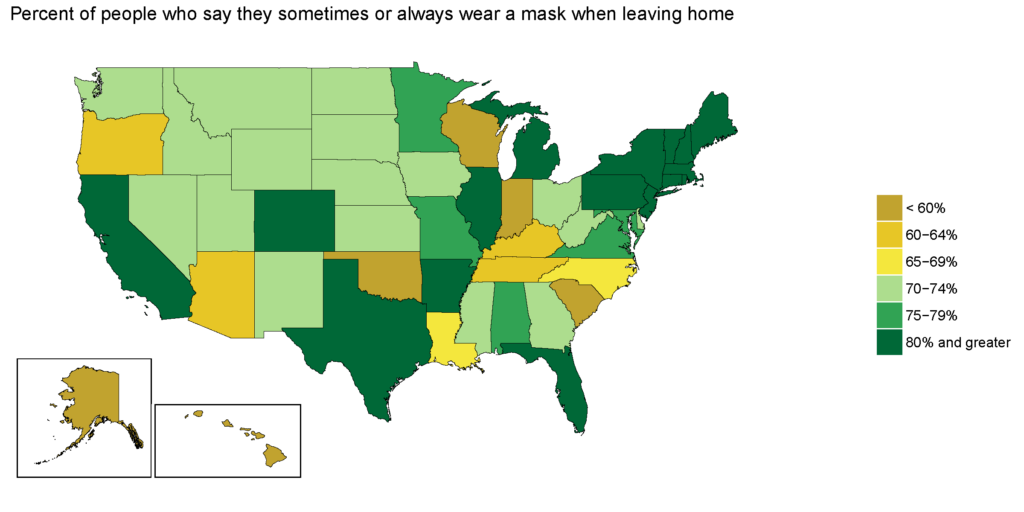
However, the relaxing of social distancing is uneven across the country and could have adverse effects. With the CDC now estimating that 35% of infections are asymptomatic, and droplets can spread as much as 18 feet, it is important to continue to monitor data to guide reopening decisions. According to one new model, 24 states still have uncontrolled virus spread. Take Arkansas, for example, who recorded its highest single day of new cases this week.
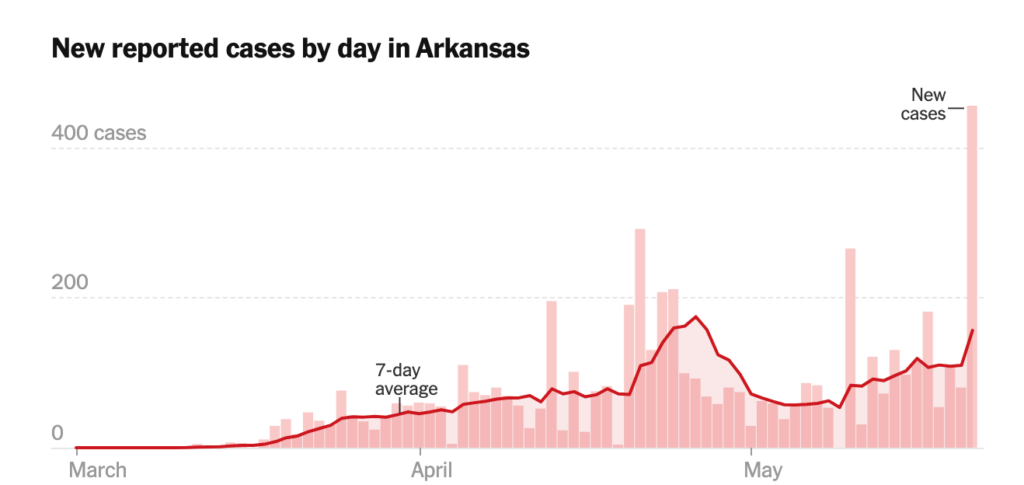
Dr. Leana Wen wrote an insightful op-ed in The Washington Post on how we can all assess our personal risk doing various activities. In the past few months, our social distancing model was an all or nothing approach: stay home or face infection. Now, Dr. Wen argues that we have shifted to a harm reduction model, where the goal is to attenuate four different types of risks: relative, pooled, cumulative and collective. Remember that risk as a spectrum is a function of three main factors:
- Proximity
- Activity
- Time
I believe that with these thoughts in mind, we can begin safely returning to some activities. Evidence shows that most infections occur indoors. Take this South Korean gym study, for example. High intensity classes accounted for all transmission, with none in yoga or Pilates. The risk of infection indoors is almost 19 times higher than in open-air environments, according to another study from researchers in Japan. Certain professions have more risk than others.

Let’s talk about our favorite topics: testing and tracing. Dr. Michael Osterholm, director of the Center for Infectious Disease Research and Policy at the University of Minnesota, argues that testing should be conducted in a smart manner. What does this mean? Testing strategy should include the:
- Right infrastructure
- Right population
- Right test
- Right interpretation
- Right action
Additionally, researchers have argued for the use of retail clinics (CVS, Walmart, for example) as widespread test sites, as many counties across states do not have testing sites, as seen in this map.
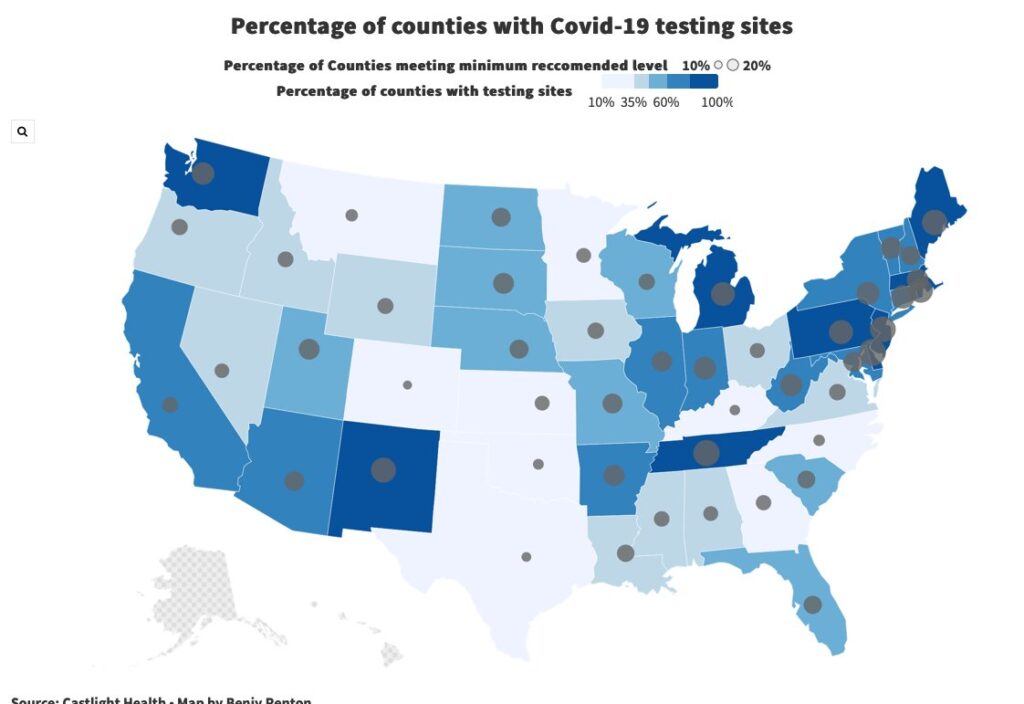
Tracing is necessary too. It’s not rocket science. The public should be prepared to undergo quarantine if contacted by a contact tracer. While this could cause disruption to your daily life, it is for the health and safety of all of us. I am currently taking a training course on contact tracing to gain more familiarity with the subject. By the course’s completion next week, I’ll hopefully have more to report.
Let’s remember that the coronavirus is still a mystery, as Nicholas Kristof of the New York Times argues. For example, researchers have now found clots in the blood vessels in the lungs of some patients. And this is certainly not the time to misinterpret or mislead through testing data.
While warm weather may slow the spread of the virus, countries like Brazil show that it does not stop it. In the meantime, state-level tracking data is essential. As we begin to live with the virus in the long run, this innovative alert system that uses data points can determine how states should enforce or relax social distancing metrics over the next few months.
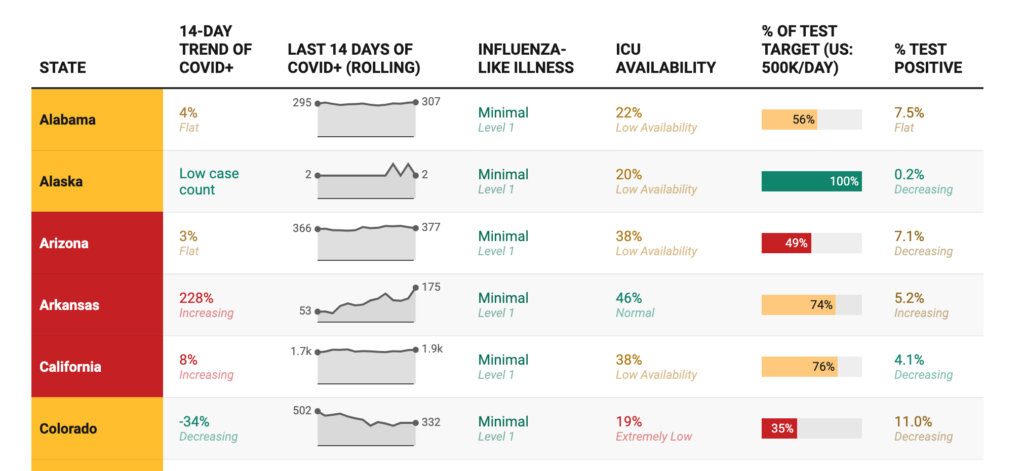
This week, we read a new report illuminating the epidemiological transmission behind what are known as “superspreading” events. New data show that about 10% of cases lead to 80% of the spread. The key to understanding this statistic is a value known as k. This is the dispersion factor and shows how much the disease clusters. The lower k is, the more transmission comes from a small number of people (and thus the more that superspreading events play a role in spreading infection). Some estimated k values for other diseases are:
- SARS (2003) – 0.16
- MERS (2012) – 0.25
- 1918 flu pandemic – 1
- Covid-19 – 0.1
With an incredibly low k value, this is why it is important not to gather in large groups. On Friday, President Trump said he wants to open churches and places of worship, immediately, and will “override” the governors if they do not do so. This is incredibly dangerous. Why? After 2 symptomatic people attended a church in Arkansas in March, 38% of the church attendees contracted the virus and 3 died. With new CDC guidelines asking church leaders to “consider” doing various disinfection tasks, how is it possible to socially distance in a church? The word “consider” is incredibly vague. I’m going to consider going to the Bahamas tomorrow. That in no way means it is happening. As the rules change, the virus does not. Do not let your locality become the next CDC case study.
Let’s finish this section with a quick roundup of the news from the week. Long-awaited data from the clinical trial of remdesivir that Dr. Anthony Fauci presented last month are out, showing a significant reduction in the time spent in the hospital for patients with serious illnesses. No matter what the president says, hydroxychloroquine is incredibly harmful as a treatment for the coronavirus, as seen in this study in the Lancet of over 96,000 patients from 671 hospitals on 6 continents. End of story. Protective immunity against the virus has been seen in monkeys. New data from China show when travel within the country could be back to normal (it is expected to pick up in October). Pharmaceutical company Moderna released positive results from their vaccine trial, though without concrete data on the progression of the study it’s unknown how much of an immune response was mounted. The American Camp Association released a comprehensive set of guidelines for summer camps (take that, CDC), although many traditional “sleepaway” camps have cancelled. More New York antibody test results show the disproportionate effects of the virus on minority communities. According to a new South Korean study, patients who test positive for the virus after recovering are not infectious — they are just shedding dead virus. New modeling from Columbia University shows that practicing social distancing guidelines a week earlier could have saved 36,000 lives. China still faces the “big challenge” of a potential second wave of Covid-19 infections, the country’s top respiratory authority has warned, according to an exclusive interview with CNN. Dr. Robert Redfield of the CDC has also warned of a possible second wave in the fall.
A repeated refrain of mine is that public health should never be political. After another week watching the president put on a show, visiting battleground states for rallies disguised as events without a mask during a pandemic, and conducting a deflection and distraction campaign with announcement that he is taking hydroxychloroquine as a prophylactic, the facts, data and advice for concerned Americans are increasingly being withheld. An AP report says that “Republican political operatives are recruiting ‘extremely pro-Trump’ doctors to go on television to prescribe reviving the U.S. economy as quickly as possible.” After the CDC finally released its guidelines for opening various businesses, a new CNN report quotes current CDC officials saying: “We are working under a black cloud of an administration that doesn’t have our backs. We’ve been muzzled.” Where is the humanity in this? We are all trying to save lives. Can that be our American priority?
With the fall on our mind, let’s move onto higher education.
Higher education
Everyone wants to know the answer to this key question.
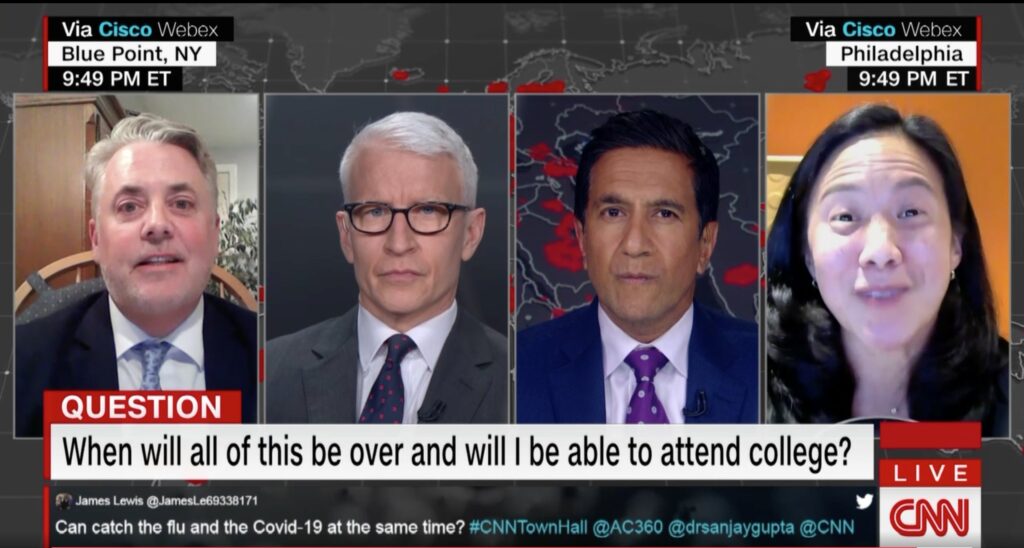
Opening college campuses this fall is an incredibly complex process. Let’s start today’s discussion with a great interview with Dr. Fauci in the Chronicle of Higher Education. Some highlights:
- Models for opening will vary geographically
- Antigen tests could be key in testing large populations
- Unlikely for college students to require intensive care
- Surveillance testing (based on intermittent samples taken from populations on campus throughout the semester) is key
Why is it so hard to ascertain how the coronavirus affects schools? Easy question. There is just no empirical research on the topic, since most schools have been closed during the outbreak. On the other hand, Sweden, whose schools have remained partially open, did not collect data on outbreaks that occurred in schools.
As one article in Inside Higher Ed reads, it’s not so much when colleges open. It’s how. I agree with this argument, to an extent. The CDC has released guidelines for opening colleges and universities, including social distancing and closing communal spaces such as lounges and exercise rooms. More tools continue to emerge by the day to guide colleges in making decisions. It’s now a question of what schools will do with them.
My colleagues Andrea Klick and Scott Smallwood analyze the rhetoric behind colleges’ reopening announcements in an Open Campus article. There are three examples of colleges’ “planning for in-person” statements:
- We’re Coming Back — But With a Loophole Big Enough to Drive Our Entire Endowment Through
- We’re Coming Back, Come Hell or High Water
- We’ve Got Plans — Lots of Plans
Colleges and universities are like cities — they’re complex ecosystems in their local communities. Town-gown relations will be key going forward. Faculty play a huge role in the final decision, as two professors argue:
We recognize that the value of human life is not absolute and that risk must always be managed in public policy. However, a return to academic life as normal can only be morally justified if the amount of death and suffering likely to ensue is outweighed by even greater harms. Whether staff furloughs, salary reductions or other negative financial impacts can be cast in such weighty moral terms is a case that universities need to make. Instead of making this moral case, some colleges have quietly begun to seek immunity from lawsuits in the event that members of the community fall ill or die.
Universities will be better positioned for the fall if they avoid undue optimism and focus instead on increasing their competitiveness in the challenging digital environment to come. This is not a time for motivated reasoning in the service of enrollments, endowments or even optimal pedagogy. We too would like to teach in person. But we would rather live to teach another day.
Spokeswoman for the American Academy of Pediatrics Dr. Tanya Altmann laid out these steps for college and university risk mitigation in a CNN Global Town Hall this week.
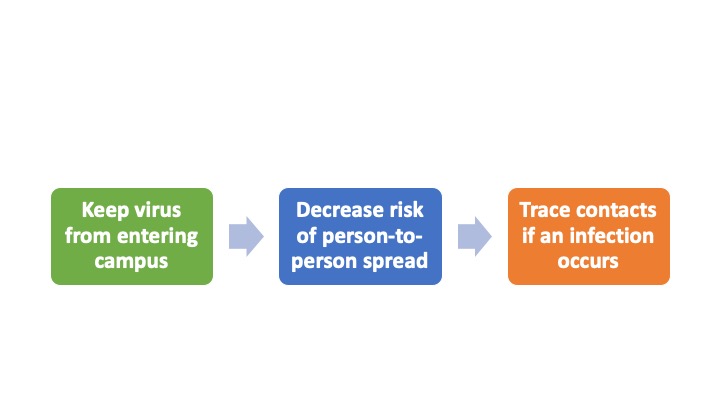
Like the California State University system in last week’s report, Notre Dame shocked the higher ed world this week by announcing that they will begin the fall semester two weeks earlier than originally scheduled, will forgo fall break in October and end the in-person semester before Thanksgiving. Many schools followed suit, including the University of South Carolina, the University of Texas, Syracuse University and the University of North Carolina. It’s worth noting that the majority of these schools are large, public institutions. I don’t know what to make of that just yet. For next week, I will hopefully have preliminary data from my study of college announcements using the following factors:
- Public/private
- Percentage of students on campus
- Percentage of students out of state
- Large/small
- Rural/urban
- Percentage of students on financial aid
What is the reasoning behind these colleges’ decisions? These models are based on the predictions that there could be a second wave this fall, combined with increased risk of students bringing the virus back from breaks. By Thanksgiving, students will be back home and supposedly safe. However, as my colleague Andy Thomason at the Chronicle of Higher Education points out, “This plan is premised on two ideas that seem a little shaky:
- By eliminating breaks from which students would return, you lower the risk they’ll come back from travels with the contagion
- The semester will end before a ‘second wave’ of the coronavirus”
Remember the key axiom: “All models are wrong, but some are useful.” We do not know if, or when, a sudden second wave will occur this fall. Models disagree on this point, but I doubt that it will come conveniently as students leave for Thanksgiving. Personally, I find this model incredibly short-sighted. Is the expectation that this second wave would recover before students come back in the spring? Are students expecting to leave for Thanksgiving and come back in February? Based on what we’ve seen currently on how long education takes to recover, in my opinion, it is implausible that if a large wave hits, students would be able to get right back to campus in February. No college has addressed this key shortfall.
What are some other models we’ve seen this week? Cambridge University in England has eliminated all lecture classes for the next academic year. Lecture classes in the British system are relatively few and far between, and are often large groups of students. Boston University is setting up testing for students and faculty. Based on our country’s uneven testing strategy, I think these inequalities in testing distribution will be felt across the entire patchwork of higher education. Bennington College is using a blended in-person/virtual model with two seven-week terms and health screenings. Ithaca College is delaying their start of their academic year, with classes due to begin October 5. Regardless of whether the fall is in-person or remote, Williams College has reduced the number of courses students take each semester from four to three to allow classes to spread out and reduce the pressure on students to take a full course load in a remote semester. Winter Study, their January term, has also been cancelled, in an effort to use that time to determine the logistics of the spring semester. Chapman University is asking sophomores to live off campus, reducing on-campus density. However, as Lindsay Ellis at the Chronicle points out, you have no idea how safe your students are off campus and if they’ll stay healthy. This will be a key point as colleges seek to reduce on-campus populations. Purdue University is proposing for some teachers to teach behind plexiglass. Indiana University is issuing proposals for residential life, including “scheduling times for grooming and showering to reduce simultaneous occupancy.” The University of Vermont is planning to test students who are moving into off-campus housing starting on June 1, keeping them in a “supportive quarantine” with a gift basket and other supplies and then testing students to exit quarantine after seven days. This is in accordance with the state’s policy for out-of-state visitors. The school is also investigating options of class flexibility, possibly holding classes on nights and weekends. Let’s keep looking back at our 10 models and see how universities begin to fit into them.
Complementing my 10 models, Edward J. Maloney and Joshua Kim contextualize 15 fall scenarios on a spectrum from “back to normal” to “fully remote.”
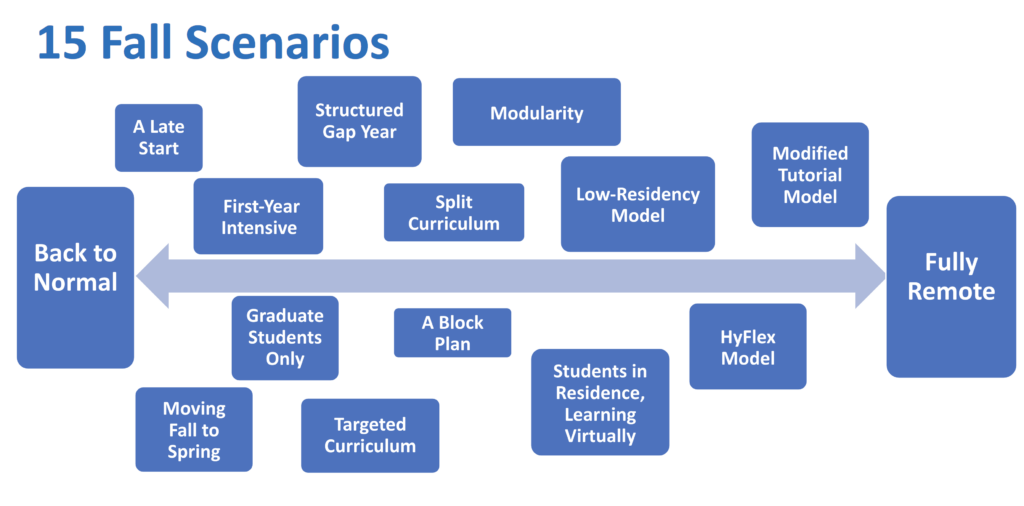
A survey on these scenarios conducted by Niche shows that “three scenarios — holding in-person classes like before, offering classes so that some were in person and others online, and having three- to four-week block schedules (in person) — appealed to a majority of undergraduates,” according to Inside Higher Ed.
Colleges are still considering as many options as they can. In this survey of 376 schools conducted by the American Association of Collegiate Registrars and Admissions Officers, all options are certainly on the table, with an uptick in delaying the start of term or starting early. A new McKinsey report shows that current enrollment numbers remain largely unchanged, though a remote fall semester could change things dramatically. Additionally, the challenges of remote learning are not distributed equally. Colleges will need to invest in the remote learning experience if they choose to pursue this path for the fall, especially for low-income students.
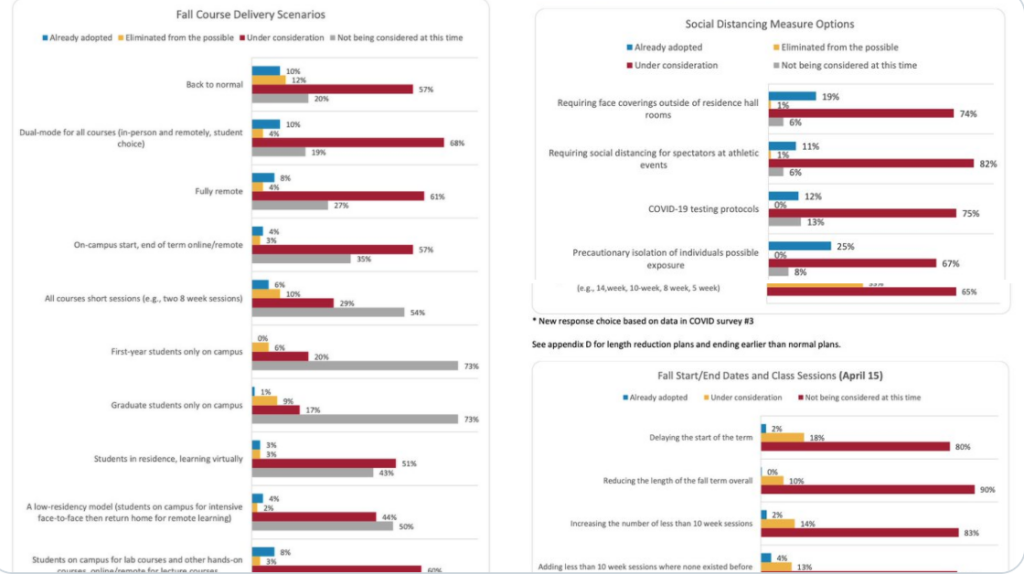
Seton Hall professor Robert Kelchen argues in the Chronicle of Higher Education that colleges’ statements to reopen for the fall are based on three underlying elements: to keep students enrolled, political posturing and sheer optimism. “Nobody wants to be among the first presidents to announce that classes will be fully online in the fall. The financial and political risks can’t be ignored. But the scenario is almost a certainty, and the risks will be even greater for colleges that take too long to prepare for it,” he writes.
Professor Kelchen references a new paper from Davidson College researchers that shows a domino effect from colleges suspending classes in March, illustrating influence from political pressures from state governments and peer institutions. He and I believe that the same phenomenon will happen this summer. “A similar game of follow-the-leader will very likely take place in late June or early July, when presidents of a few prestigious colleges will write opinion pieces in national newspapers announcing their institutions’ decisions to stay online in September because of public-health concerns,” he writes.
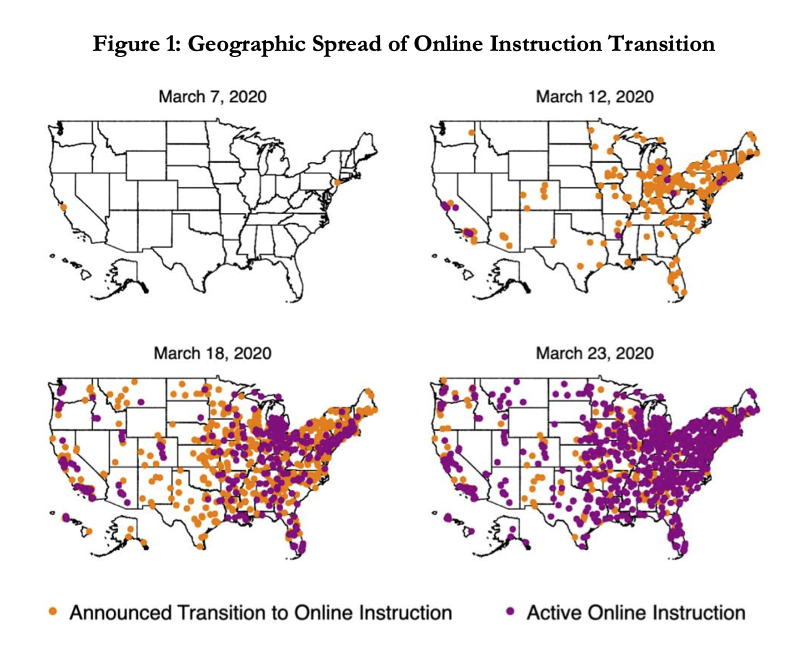
An additional report this week shows the effects college students who went on spring break and then returned to their campuses had on accelerating the spread of Covid-19. Using college academic calendar and mobility data, the researchers concluded that counties with greater numbers of early spring break universities had 20% higher confirmed cases per capita than counties with effectively cancelled breaks. This is significant because universities have the opportunity to affect the behavior of millions of young people who have the potential to exert large negative externalities on the surrounding community.
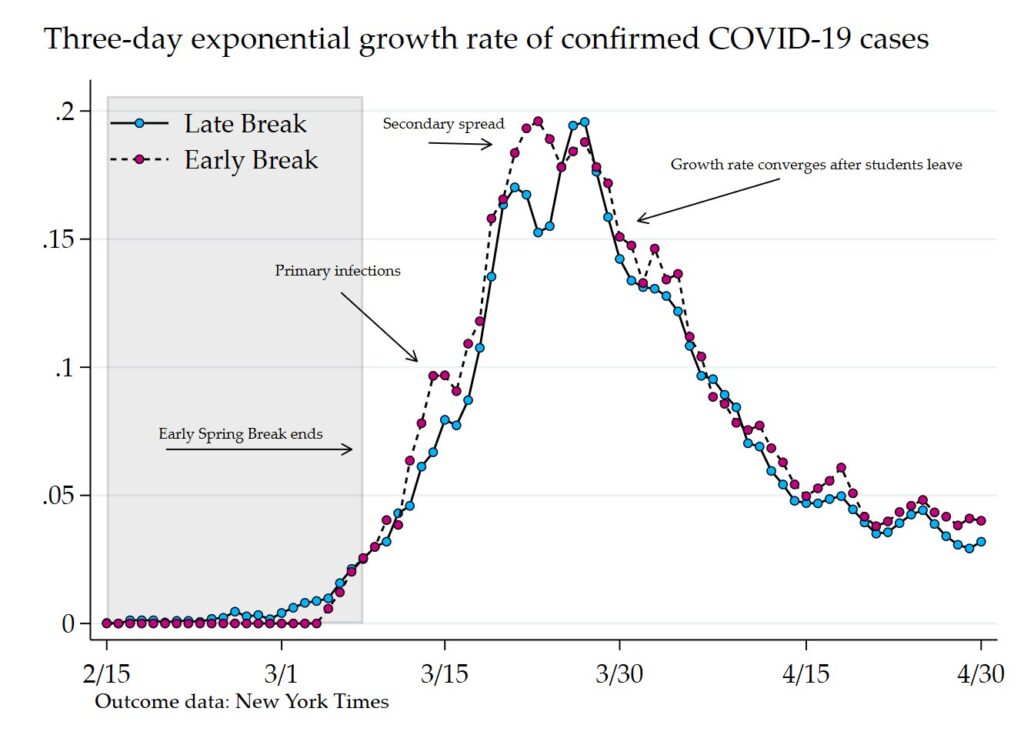
With all these plans, further questions remain in my mind. How will testing work — will a ramp-up in testing happen for the fall? I see that this could happen depending on colleges’ regions, sizes and prices they are willing to pay. How will social distancing be enforced on- and off-campus, especially on nights and weekends? Will students need to sign a social distancing contract to wear a mask and abide by the regulations, as the University of Pennsylvania is considering? If an outbreak occurs on campus and large amounts of the college population would need to be quarantined for two weeks due to contact tracing (and this could happen repeatedly), how much of a disruption would this cause to students’ academic progress? And most importantly, with all the costs colleges would need to pay for these preventative measures (including possibly renting off-campus housing to reduce the on-campus student population) and inhibitions to the traditional residential college experience, is it all worth taking this risk?
These are questions I will continue to investigate as the situation progresses.
Study abroad and international travel
I still don’t think programs will be running for the fall. A few updates on the China front. As travel within the country is slowly returning to normal, a continuation of the restrictive flight policy (airlines can only fly between the U.S. and China once per week, essentially) through October could mean that visas for non-essential tourist and study travel will only begin to become available then. As the country’s top legislators gather now for the annual Two Sessions, which was postponed this year due to the virus, an outbreak in China’s northeast has put many more people on lockdown.
Finally, according to a report in NAFSA: Association of International Educators, Covid-19 will cause a $4.5 billion hit to international education, including a $3 billion loss in international enrollments at U.S. colleges, $1 billion for shortened/cancelled study abroad and $638 million to support stranded students and scholars, according to the Chronicle of Higher Education’s Karin Fischer. This is huge.
The Good Stuff
Lots of hard news this week. Let’s roll the clips of the good stuff. In my weekly tradition, I feature my favorite pieces from the week, including my favorite examples of student journalism. Congrats to the Class of 2020, many of whom will graduate this weekend!
- You know how you’re all baking during this national crisis? Here’s how King Arthur Flour had to step up their flour game.
- The Tufts Daily’s review of the national events during the Class of 2020’s time on campus.
- The Yale Daily News’ commencement issue.
- The Washington Post ran a feature on what it is like to graduate in a pandemic.
- Time magazine published a similar piece.
- Senegal’s pledge for a hospital bed for every coronavirus patient.
- Another Day No Sun: A La La Land parody about quarantine life by a NYC theater group.
- New York City’s reduced noise level during the pandemic.
- Annie Glenn, a champion of those with speech disorders and wife of astronaut John Glenn, passed away at the age of 100, in this heartwarming obituary.
- One student’s experience of living in a University of California, Berkeley dorm during the pandemic.
- Two college students who spent the last months of their college career as morgue workers.
- One class at the University of Texas at Dallas held an online graduation with students’ pictures in a box.
- One student journalist at Northwestern University shows what Evanston’s response to the 1918 flu can tell us about Covid-19.
- Governor Andrew Cuomo’s campaign for New Yorkers to submit “Wear a Mask” ads generated amazing work from five finalists.
- Student journalists have become “essential workers,” as this student journalist puts it, featuring many of my colleagues from around the country.
- A day in the life of an Instacart delivery man.
- Someone is still watering the tomatoes at the Guggenheim Museum in New York City.
Conclusion
Longest update yet! As we go into June, institutions of higher learning will continue to make decisions as the country progresses in its pandemic trajectory. It’s all a big experiment. We have to continue monitoring the data and do our part to keep our fellow Americans safe and healthy. There is hope.
I’d like to thank all the student journalists with whom I have the pleasure of working. In the next weeks and months, these student journalists will become ever more important in chronicling their colleges’ decisions for the fall and beyond. Support their work by reading it.
Let’s all keep doing what we’re doing and we’ll get through this together. My best to all for good health.
Like what you see? Don’t like what you see? Want to see more of something? Want to see less of something? Let me know in the comments.
For more instant updates, follow me on Twitter @bhrenton.

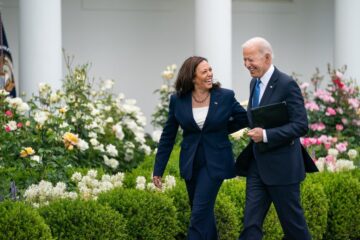
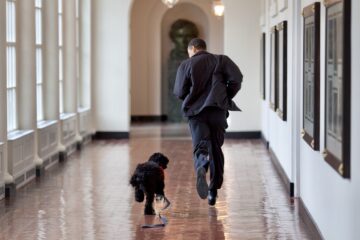
2 Comments
Michael Wasserstein · May 23, 2020 at 12:56 pm
Fantastic work, Benjy! I look forward to reading these every week!
Where We Stand with Covid-19 — May 29 - Off the Silk Road · May 31, 2020 at 1:10 am
[…] last week’s update was rather long, I’ll aim to be on the short side this […]
Comments are closed.